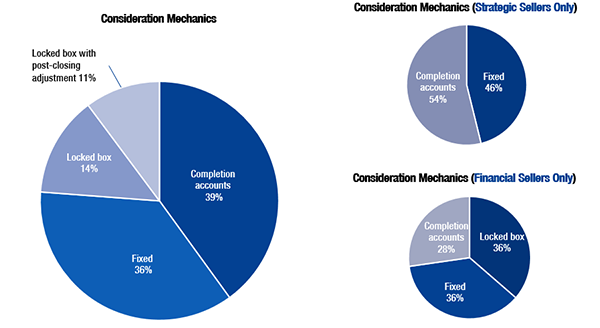MoFo 2020 Asia Buyouts Report: Update on Deal Terms – I. Pricing the Deal
MoFo PE Briefing Room
MoFo 2020 Asia Buyouts Report: Update on Deal Terms – I. Pricing the Deal
MoFo PE Briefing Room
We looked at 28 deals across Asia signed or closed pre-COVID-19 in which the buyer or a group of affiliated buyers acquired all or a significant majority of the outstanding equity of the target. We examined the common key terms in these deals and have sought to provide our insights on the patterns that the results reveal.
Approximately one-third of these deals involve a target in Southeast Asia and another third involve a target in Korea, with 25% involving a target in China or Hong Kong and 7% involving a Japanese target.
Ten deals involve an implied target value of between USD100 million and USD500 million; seven deals involve an implied target value of USD500 million or above. While the deals we have looked at may not represent all the recent deals in the Asia market in the past 12–18 months, they do represent buyouts of a wide range of deal sizes and we believe are indicative of certain market trends.
We will be releasing a series of short articles highlighting the key trends identified from these sample deals and will in parallel examine, where relevant, how they may have been impacted by availability of warranty and indemnity insurance.
In this first part of our Report, we first look at the consideration mechanics used in our sample deals. In summary:
Many sellers and buyers in Asia may still be unfamiliar with the locked box mechanism as historically sellers and buyers in Asia generally favored a completion accounts mechanism. Under a completion accounts mechanism, sellers and buyers agree a valuation for the business on “cash-free, debt-free and normal working capital” basis. That value is the “Enterprise Value.” At closing, the buyers pay a closing amount representing a good-faith estimate of the cash, debt and working capital level as at the closing date. After closing, closing statements are prepared (often by the buyers) to verify the actual level of cash, debt and working capital, which will result in adjustment to the final price paid to the sellers. The final price paid post-adjustment is often referred to as “Equity Value.” Because the final adjustment is not made until after closing, neither seller nor buyer has any certainty over the final price until well after closing.
Locked box mechanics, on the other hand, fix the Equity Value at signing and thus provide more certainty to sellers and buyers with respect to the final price. Such Equity Value is calculated based on the most recent historical financial statements of the target group, in which the cash, debt and working capital level as at that historical date (the “Locked Box Date”) would have been known to both parties. Parties then work into the fixed price all adjustments appropriate based on the known amounts of cash, debt and working capital and agree on the single number to be inserted as the price in the sale and purchase agreement (the SPA). No definitions of cash, debt or working capital are required in the SPA, as no adjustment will be made to the price fixed in the SPA.
Buyers take the economic risk and benefit from the Locked Box Date. In return, sellers will typically provide an indemnity in respect of any “leakage” (i.e., transfer of value of the business to the seller or any seller-related party between the Locked Box Date and closing) but will be compensated (for not receiving the Equity Value until closing) by receiving interest accrued at a rate agreed between the parties from the Locked Box Date to the closing date.
If locked box provisions are tightly drafted, any movement in working capital between the historical Locked Box Date and the closing date will be equivalent to the movement in net cash/debt, so no party will be worse off by agreeing to adopt the locked box mechanics than they would be under completion accounts mechanics.
Below is a quick summary of key actions using the two different types of pricing mechanics:
| Locked Box Date | Signing Date | Closing Date | Post-closing |
Locked Box Mechanics |
| - |
| If any leakage is discovered post-closing, Seller indemnifies buyer. Claims must be made within an agreed short period after closing. |
Completion accounts | Buyer and seller agree on the accounting principles and definitions of financial terms based on which closing statements will be prepared. | Parties estimate closing cash, debt and working capital a few days before closing. |
|

Completion accounts have been the preferred post-completion price adjustment mechanics in Asia, where the parties are not able or willing to agree on a fixed consideration at signing. This has remained the case during the past 12–18 months, with 39% of our sample deals using a completion accounts price adjustment and only 25% using locked box mechanics.
In the case of deals involving financial sellers, 36% of them adopted locked box mechanics, while only 28% of financial sellers opted for completion accounts mechanics.
These statistics demonstrate the following:
None of the exits by corporate sellers used a locked box structure. This fact can probably be explained on the basis that:
In addition to being aware of the differences between locked box mechanics and completion accounts mechanics, it is important for PE investors and sellers who desire to price their deal by way of locked box mechanics to bear in mind the following:
If you are interested in the content of our full report, please reach out to us and we will be happy to discuss other aspects of the report with you.
